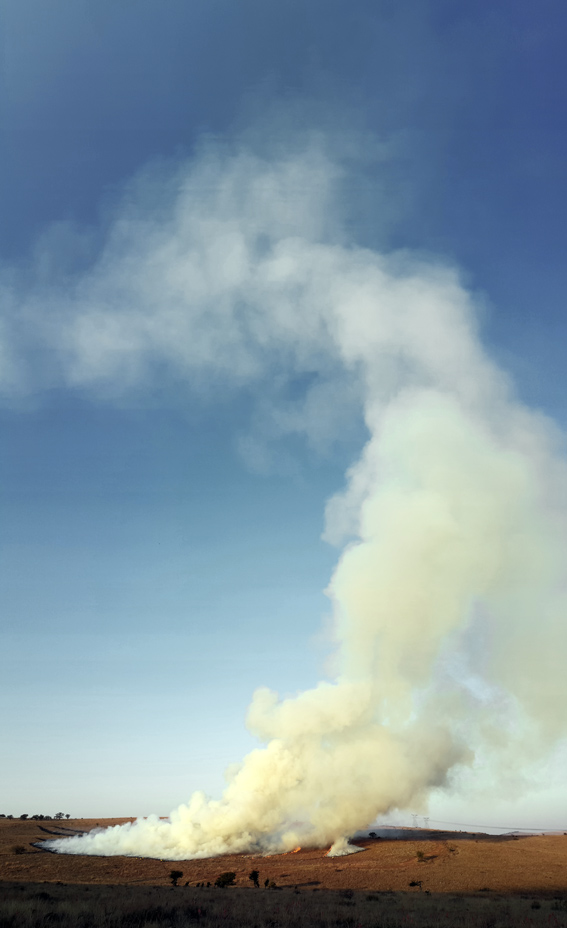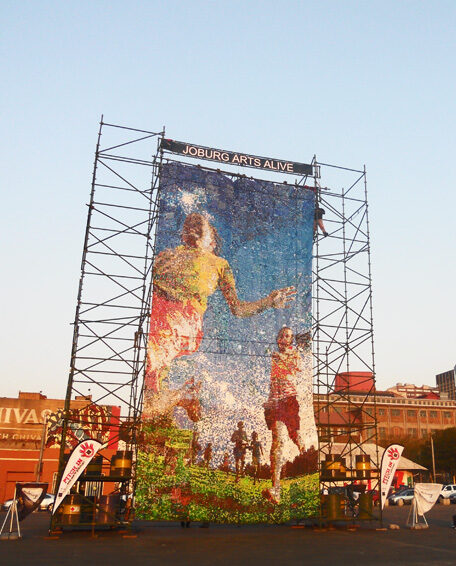Functional Public Arts: My approach to new public and site responsive artworks (2013 onward) is to build a network of social entrepreneurial professionals who are open to out of the ordinary partnerships to address challenges through the arts such as this infographic from Locust and Grasshopper explain: FiregrazerWeb.
Artists and scientists that work in parallel on projects create wider audiences for their innovations. Reasons why these art and science collaborations work well are: They both value the careful observation of their environment to gather information through the senses, they both value creativity, they both propose to introduce change, innovation and improvement over what exists, they both use abstract models to understand the world and they both aspire to create works that have universal relevance. (P. 18 Wilson 2002).
In the savanna ecosystems partnership: Locust and Grasshopper 2017 and ‘Eland & Benko’ 2015 with scientist Sally Archibald a 5Ha grassland were burnt in the Nirox sculpture park. Teams from Working on Fire burnt the image on 24 June 2017 and 13 June 2015 respectively as a ‘performance’ at sunset. My practice explores humans’ relationships with nature and how it evolves for the younger generation.Fun
During my 2014 International Yatoo Artists residency in Wongol, South Korea I met British artist, James Towillis. He already started building a platform to suspend in the forest. We realized that my interest in collaboration sat completely parallel to his ideas. My goal to build a platform was to have a solo space to look and listen to nature, to observe how nature solves systems problems. These learnings are then mimicked in my longer terms projects developing technologies that works with nature and not against it.
A low res version of the printed catalogue can be downloaded here: Yatoo
The platform, our forest studio, is open to anyone in need of a contemplative space. The Yatoo Nature Art masters have inspired me to look even deeper at nature, the way they have done it for more than 30 years. To select thoughts of the time we are living in and translate it for a wider audience through artworks. The old landscape painting masters idealised landscape, I aim to look closely and instead of idealisation, apply its way of solving social and ecological problems. By visiting the suspended platform amongst the trees I allow for ideas to form through an accumulation of free association. According to James’s research these moments of clarity don’t occur when you are hard at work, but when you actually stop thinking about the problem you are trying to solve. Building the platform together we had a shared outcome to different thought processes.
For James “the project aims to draw people together to create spaces in nature for what might be called embodied listening, a form of dialogue that is no longer a common language to most of us, it exists without symbols as a resonation within our bodies, like music. An equally important element within embodied listening is mimicry, an “imitative process established through repeated observations of the non-human other over time”.
This experience cannot be mediated.
Such Initiative’s slogan is to change perceptions through eco-conscious public art. Coetzee collaborated with fellow artist Usha Seejarim on various community driven public arts projects from 2009-2011. They completed a photographic mosaic, ‘Tomorrows Joy‘ 2010 with 140 children and disabled adults, made from discarded plastic bottle tops measuring about 100meters square. At the time bottle tops were not recycled and this work drew attention to different kinds of plastic. The artwork was on display on Mary Fitzgerald Square October 2010 and at The National Arts Festival in Grahamstown in 2011. It won the BASA (Business and Arts South Africa) environmental awareness award for the Arts in 2011.
Such Initiative completed a 97 panel stop frame animation woven of 1mm glass beads, ‘Something that Rolls up’2011. The Department of Arts and Culture commissioned SUCH to make this work during COP 17 in Durban in 2011. The work was woven by 51 rural women from The Valley of a Thousand Hills who form part of the Hill Crest Aids centre’s sustainability plan. www.suchinitiative.org



